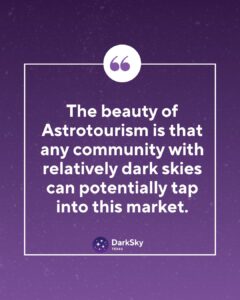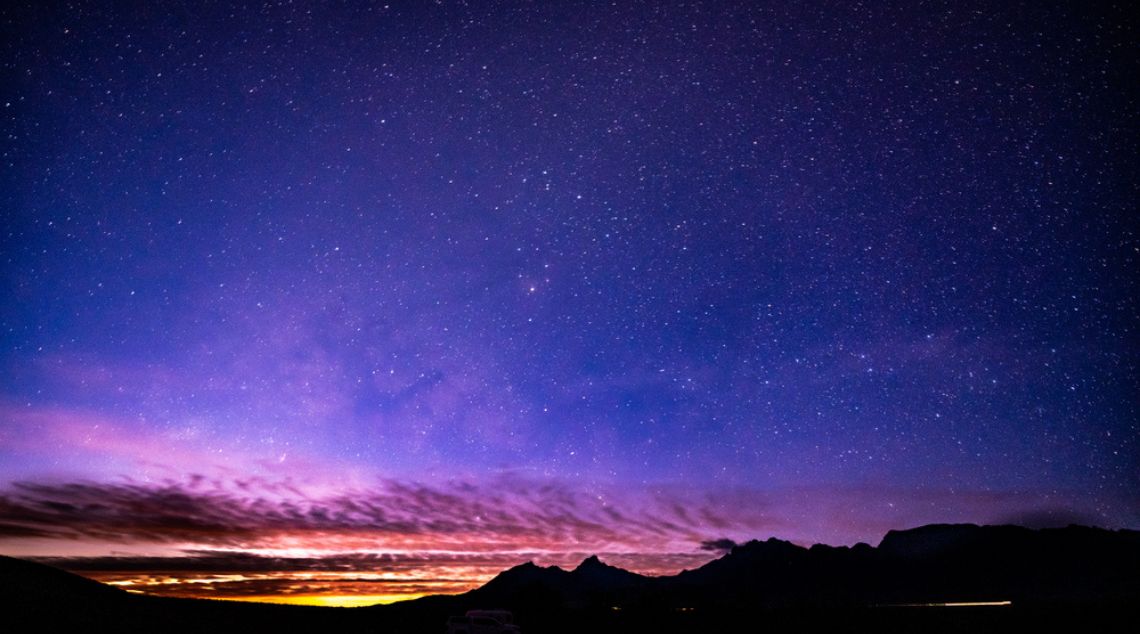For many Texans, the local night sky has long been an unassuming yet awe-inspiring sight – perhaps even one of the first things to miss about home for those who move locations with fewer opportunities to view the universe. This celestial canvas, which many of us take for granted, is becoming a rare sight around the country as light pollution dims the stars in major urban areas.
However, people from every corner of America now seek destinations with pristine dark skies. Astrotourism now offers unprecedented opportunities for cities, townships, and neighborhoods across the state.
What is Astrotourism?
Astrotourism is a growing segment of the travel industry in which visitors seek out destinations offering clear night skies for these activities and more:
- Stargazing
- Astrophotography
- Night hikes
- Storytelling under the stars
- Nighttime tours observing nocturnal animals
This niche market, which has tripled in the last five years, now generates over $1.8 billion annually in the “Colorado Plateau” region alone, spanning Colorado, Utah, and northern Arizona. According to a study by the University of Missouri, this figure represents:
- 10,000 new jobs per year
- $2.4 billion in higher wages over a decade
- Up to 5.5 million additional visitors
- A sharp uptick in overnight visitors, especially during the off-season
But we don’t need to leave the state to see such success stories! Right here in Texas, the McDonald Observatory in Fort Davis attracts over 100,000 visitors annually. Similarly, since becoming a certified International Dark Sky Place, Big Bend National Park has seen a 15% increase in off-season visitors, specifically traveling for nighttime sky viewing, helping to balance seasonal tourism fluctuations. This story is repeated in many of the officially designated International Dark Sky Places in Texas.

Could This Happen in My Area?
The beauty of astrotourism is that any community with relatively dark skies can tap into this market. Ideal locations typically share these characteristics:
- Distance from urban light pollution (typically 30+ miles from large cities)
- Terrain or an area with low vegetation offering unobstructed views
- Clear weather patterns with minimal cloud cover.
All these requirements are abundant in Texas, but they are essentially gifts from nature rather than a direct result of our choices. Yet, one more key differentiator for creating successful astrotourism destinations is achieving the International Dark Sky Place (IDSP) designation.
Official IDSP status signals to travelers that your community is committed to protecting and showcasing its night sky. It acts as a “quality seal” that lets them know they can expect a beautiful sight after dark. Texas currently boasts over twenty certified locations, including the Copper Breaks State Park, Enchanted Rock State Natural Area, Devils River State Natural Area, and the City of Dripping Springs, which have all seen measurable increases in tourism after certification.
How Do We Make This Happen?
Turning a location into an astrotourism destination requires community-wide coordinated effort:
First, the area must assess its current light pollution levels and identify areas for improvement. Widespread adoption of the 5 Principles for Responsible Outdoor Lightning can provide a good starting point.
Next, it needs to develop and implement dark sky-friendly lighting ordinances. These typically require shielded outdoor lighting, appropriate brightness levels, and warm color temperatures.
It’s also necessary to engage local hospitality businesses to adapt their service offerings to a new kind of client. Hotels, restaurants, and tour operators can develop special packages around stargazing events, or highlight lookout points in their marketing strategies.
At the same time, the area should pursue International Dark Sky certification. While the process typically takes some time, the designation provides immediate credibility and marketing opportunities. DarkSky International and our team at DarkSky Texas offer guidance and support throughout the certification process.
Final Thoughts
As urban skies grow brighter, the value of dark sky preservation continues to rise. Communities that act now to protect their night skies and develop astrotourism infrastructure are positioning themselves to capture a share of this growing market. Beyond the immediate economic benefits of increased tourism, dark sky initiatives often lead to reduced energy costs, enhanced property values, and improved quality of life for residents.
Donating to DarkSky Texas can help transform your community into an astrotourism destination. Your support will help us organize more educational events and advise local lawmakers to help preserve Texas skies from light pollution.


